How Did He Know I Had Owned British Cars When He Asked Me To Write About Them?
Published on Tue, Nov 23, 1993
By: Len Frank
“Driving the [new] Mustang near Santa Barbara, California, I dropped by to see The Weber Man, my old friend Garry Polled. Told he was at a car show, I went to see him there and found myself surrounded by British car fanatics who saw the Mustang as a sort of Remittance-cousin of the beloved Jaguar and therefore worthy of scrutiny. While the Mustang was being mobbed, a card was pressed into my hand and a voice suggested that I write a story about all of the British car that I had owned.” – Len Frank

Austin A40 Devon, MG-TD, Berkeley B90 (one-and-a-half cars), Hillman Minx drophead, Ford Anglia, Sunbeam Rapier, Jag Mk 10, Jag Series 1 E-Type coupe, TR-3, TR-4, Sunbeam Tiger, Mallock Mk XII.OK, that’s the list of English cars that I’ve actually owned, but, like that slight weep of gasoline around the jet assembly of an S.U., that starter Bendix that sticks occasionally, that wild fluctuation in the ammeter needle for no good reason, it’s just the beginning.A Sort of C.V.(1958/59)I worked for Red’s Foreign Cars (Youngstown, O.)—Jaguar, Rootes, Triumph, (1960) a big dealership in L.A. that, coincidentally sold those same cars plus MG and Austin-Healey, (1962/63) Larry Reed Sports Cars—Triumph, Rootes; then a place called Autosport that sold Morgan and Elva, (1963) Dale Brown Imports–more Rootes–in Long Beach, (1964/65) then EcurieShirlee Corp., purveyors of Lotus, (1970) Lakewood Sports Cars, Tacoma, WA—more Rootes (Sunbeam Arrow and Barracuda-style Alpine), and finally (1971/72) Hansen Bros. in Eugene, Or. where they sold Triumphs and a Land Rover now and then.(This will not be about the other cars—Porsches, Alfas, Borg-wards, Tempo Matadors, Lancias, Mercedes, BMWs 700 through Bavaria, a Skoda Felicia, Saabs, Peugeots, Renaults, Volkswagens, Volvos, Simcas, an Alpine, etc. that have cluttered my life).I have fiddled with Rileys 2.5s and Sunbeam-Talbots, Turners and a Lotus XI, Sprites and Midgets, a Rover 2000…I raced another guy’s Sunbeam Alpine F-prod car, and in the pursuit of truth, beauty and/or automotive journalism, have run the wheels off of a Rover 3500, various Jaguars including the latest XJ12, and even flogged a Bentley Turbo around Laguna Seca. I have never driven an Austin Marina. With luck, I never will. I had a long-term girlfriend who had a long-term Herald drophead, one of the problems we suffered together. She later dropped me and bought an MGB.How I Went WrongI saw my first Road&Track in late 1949. It was thinner than a comic book and less colorful, full of fuzzy grey pictures, strange language, stranger cars. I read every word—every word–cover to cover–ads, classifieds, editorials, captions, features, the masthead. The writers were heroes–the magazine transported me—it was poetry, it was magic, I was in love. I was so goddamn naive then.I became the newest member of a very exclusive club. That R&T was filled with AC and Allard, Fiat and Ferrari, Jensen and Jaguar, MG and Maserati, all run together with Monte Carlo and Le Mans, Farina (Pinin), Farina (Stablimente) Farina (Nino), Moss and Fangio. Reading took me right out of Youngstown, Ohio.Virtue and supernatural qualities and everything worthwhile, I figured, resided in all imported cars. A Fuldamobil was just as wonderful to me as a Ferrari, a Bond just as fantastic as a Bentley Continental. I didn’t have sense enough to see how hideous an Alvis roadster was or that a Singer had all of the verve of a perambulator. I’ll bet you were stupid once too.I was having none of my father’s explanations about the practicality of Chrysler products (“If you need a generator for a DeSoto, one from a Plymouth will work…If you need one for a Hudson”—as close to an import as my father ever came—”you’re out of luck.”). I ignored the whole argument.My First CarMy high school friend Bud was the channel to my first car—a 1934Plymouth. Bud would sell me the Plymouth as soon as he found something more suitable. We were going over to see a Model B Ford roadster that he planned to turn into a proper hot rod—I was driving the Plymouth.The Ford owner lived on a corner and as I approached, I clumsily downshifted to second momentarily locking the rear wheels, got the car sideways, hooked it around the corner and slid right up to the curb. The maneuver used up about two years worth of dumb luck and 6.00X16 rubber.
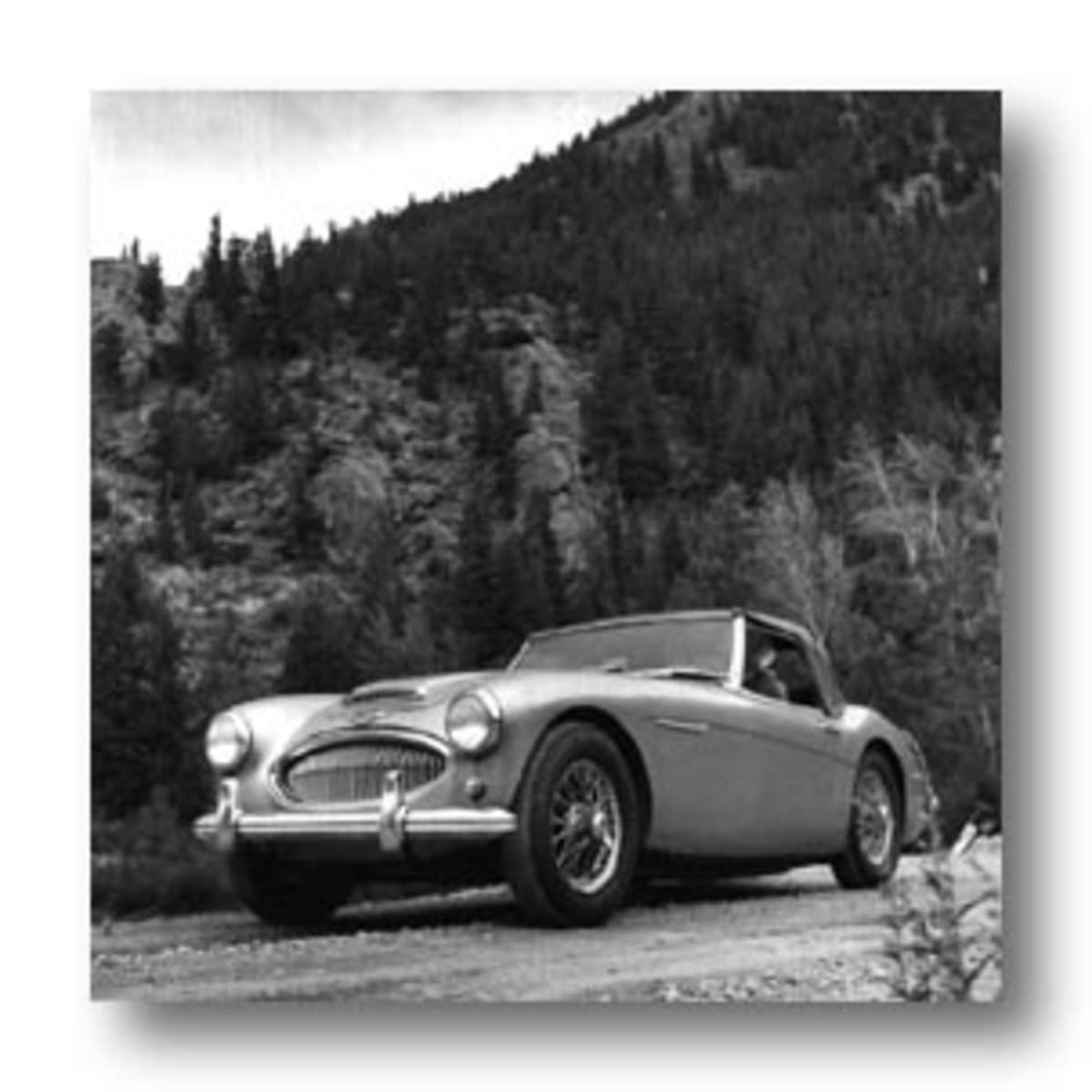
The Model B owner saw the whole thing from his porch, and when we walked up the steps to meet him he said, ” you corner that thing ala Porsche (pronounced “Por-sha”). I said, “what’s a Porsche?” If R&T was the beginning of the end, Gordon Wills, the Model B owner, was the end of the end. He also owned a Topolino-powered Siata Amica and a Ford Consul drophead—exotic stuff for Ohio circa 1952.Bud didn’t buy the Ford—he got a great boat of a Chrysler Windsor convertible with semi-automatic transmission and I got the Plymouth complete with Dodge (flathead six) engine, milled head, steelpack muffler, broken motor mount and a hundred bucks worth of credit from Bud.My First British CarAbout three months later, cruising the Plymouth through the night, I found a 1950 Austin A40 Devon four door on a used car lot. It was grey with grey real leather, a sunroof, hydra- mechanical brakes, a four speed with synchro (sometimes) on the top three, and a 1200cc ohv four that BMC eventually developed into the MGA/MGB B-series engine—clearly advanced and superior technical specification. I wanted it, I needed it. Lust.It took me about a week to convince Bud that the Chrysler was going to destroy his driving ability and that what he really needed was a fine-handling sporting machine like the A40. Anyway, the Chrysler needed a new top and winter was coming.Serendipity: R&T ran an article about modifying an A40 for greater performance—milled head, bigger jets, etc. Bud bought the car, I bought the jets (from Columbia Motor Parts in New York. Getting them in the mail was more exciting than any Jack Armstrong airplanes or Captain Midnight decoder rings. Wow.).The next step was to convince Bud (who was about 6’4″) that maybe his driving hadn’t suffered but that his image had. He ought to sell me the A40 on the easy installment plan. Have I mentioned that Bud had a job and that I was still in school? A better Chrysler convertible appeared, I sold the ’34 Plymouth to a character named Ace. The A40 was mine. My father hated it.All through the winter I practiced the arts of upshifting and downshifting, keeping that gutless little engine in the “power” band, cornering on three wheels and bragging about the car’s thin virtues.I lost road races to an aggressively driven Diamond-T semi and, alas, to Ace in the old ’34. I lost drag races to everything including a Schwinn Phantom, but while cleaning the car, I discovered dirty books—”eight pagers” they were called–secreted behind the leathercloth under the fascia. They were the first I had ever seen. I kept them right in there with my R&Ts. Aren’t British cars great?High school over, I joined the Air Force and left the tired Austin at home with my father who eventually sold it and used the money, after adding a good chunk of his own, to buy me another Plymouth–this time a ’51 (although underneath it looked a whole lot like the ’34).The Plymouth was designed for sensible people, men who sat heavily on chair-height seats, and wore fedoras while they drove. It was a dull, upstanding, Eisenhower-American, mid-western icon. No love, no magic, no wonder. Just a grey Concord Club Coupe with a pushbutton radio, a heater and hub caps instead of nave plates.
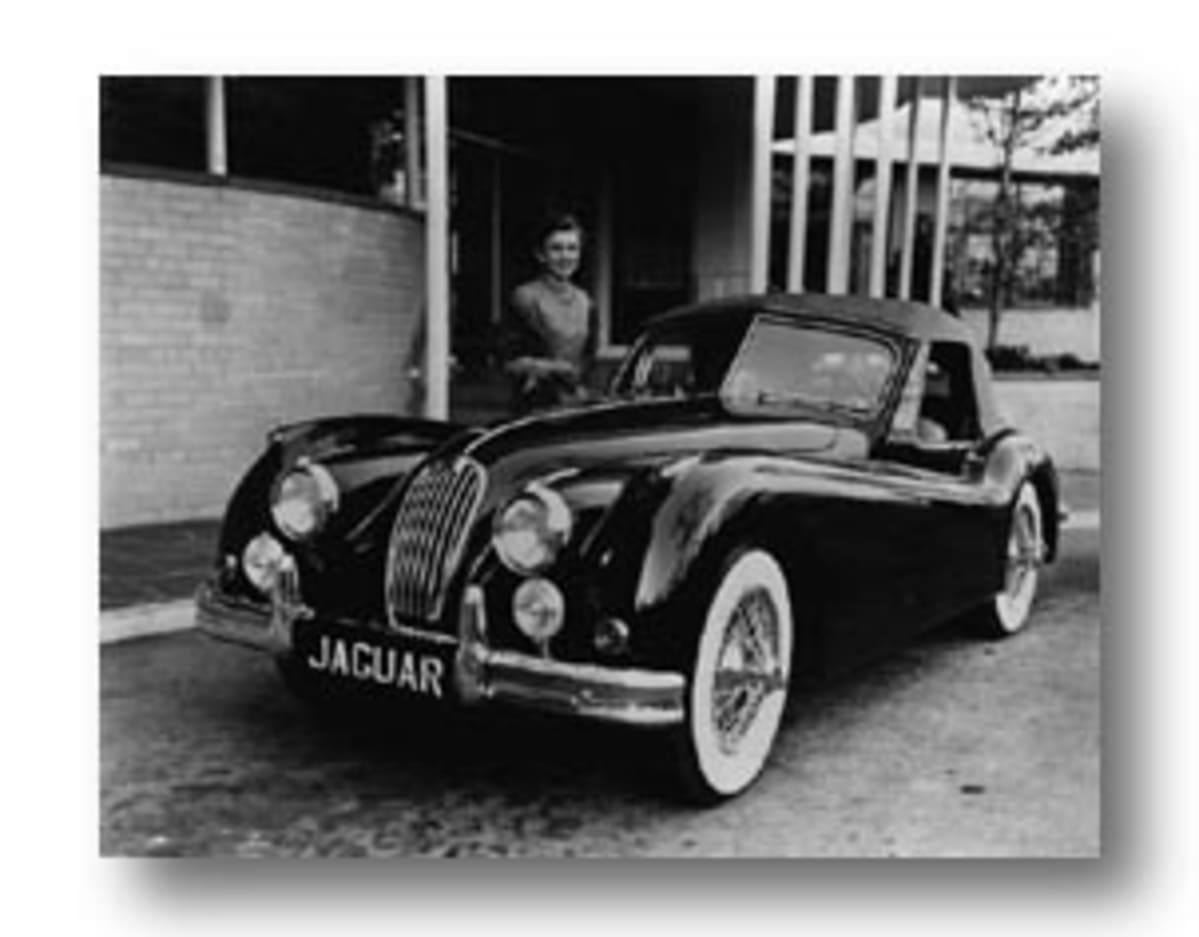
I came home on leave and took it back to my Air Force Base in South Carolina. The Plymouth episode ended when a tipsy non-com T-boned it on the base traffic circle. Myroommate and I pooled resources and bought a moderately disassembled, sort-of-restored 1941 Lincoln Continental coupe complete with overdrive, six-ply 7.00X16 tires, Houdaille shocks set on full hard, and a 1947 Lincoln V12 engine with a dipsomaniacal thirst for gas, water, and oil–not necessarily in that order. Truly a great car.My First Sports Car Race—Won by JaguarThen came March of 1956 and a bunch of us went to the SCCA road races at Walterboro, S.C. We got down there and loitered in front of the Continental until someone asked us if we would like to be flag men. We were instant insiders.The local SCCA had hosted a race the preceding autumn. It was a nice little regional with the marbles taken by a Porsche 550 Spyder that came up from Florida.This time, Nirvana: there were 120 & 140 Jags—one driven by Bobby Rahal’s uncle—and DB-2 Astons, and 300SL Gullwings and Healey 100s, and Wacky Arnolt’s factory Bristol team, and AC Aces and Triumph TR-2s & 3s all running in the big production car race. Paul O’Shea in a 300SL beat Chuck Wallace in a 140MC.The small production race had a fleet of Porsches, including a rare 1100cc roadster and a Carrera GT Speedster, the first MGA I had ever seen, and T-type MGs from C through F 1500. Carreras are faster than T-types.But the modifieds: Briggs Cunningham stopped by on his way to Sebring with his white-with-blue-stripe D-Types, Jim Kimberley had a brace of Ferraris–he chose the 121LM. There were 250MMs and 500TRs and 4.1s and 4.5s, all being chased by a Maserati 300S and an A6GCS, and a Cunningham C4R (Fred Wacker) and a C5R (Chas. Moran) and the Wop Rod (A Siata 208S coupe powered by a Ferrari Mondial), Porsche Spyders and a fantastic Lotus IX (“That’s right sonny…it’s aluminum. Take your hands off…”) and a Bandini-Crosley and a Stanguellini and Crosley specials…Oh yeah—Sherwood Johnston won in a Cunningham D-Jag, Kimberley was second, Cunningham himself third. The guy with the Bandini (blown engine) offered to sell me the car and a trailer for $1500. I was making $88 a month at the time. Lust but no dough.Walterboro bit into my Air Force career so profoundly that I almost got court-marshaled for day- dreaming.I Find my MGWe went to Sebring a few weeks later (Fangio in a 3.5 liter Ferrari beat Hawthorn in a petrol-injection D-Jag). The next race was at Gainesville, Georgia near Road Atlanta today. When a couple of us arrived on Friday acting as if we actually belonged, the locals were still setting up the (airport) course. We helped a bit and one of the chamber of commerce guys asked finally what kind of cars would be racing.“MGs and Jaguars” one of us said.“Emjays” the cc guy said (we winced at the pronunciation), “Ah have one of them little ol’ things in my back yard.”The story was that he had bought a Morris Minor flathead convertible during a hilarious weekend in Atlanta a few years before. He loved the toothless little thing—it was reliable, got good gas mileage, got along well on the local secondary roads.In ’53, he was back at the dealership in Atlanta getting the Minor’s rear hubs greased (“two pumps with a low pressure hand gun”) or something, when a honey-tongued devil of a salesman showed him a ’51 TD that had just been taken in. Soon he was taken in, a trade was arranged, and he went home in the MG.It broke early and often and eventually was relegated to his back yard as a play apparatus for his kids. By the time the weekend was over I had mentally committed to buy it, sight unseen. He wanted $700, I offered $500, I was sure something could be arranged for $600, if I could ever get $600 together.A month later I had sold my share of the Continental, had guarantees of loans from a few friends, and the offer of a ride down there from Tom Blackman, the Mongolian Mechanic, who had a reasonable car (a ’55 Chevy).Blackman and I left on a cool, gloomy Saturday morning and got to Gainesville late in the afternoon. We spent an hour looking at the car (filled with mouldering pine needles, tires cracked and semi-flat, everything damp, battery corroded and absolutely dead, top rotting, plywood delaminating—the engine did turn over on the crank but it was out of gas). Lust again.It was already dark. I was making LeMans starts in my head when Blackman dragged me off to find a place to spend the night—ultimately we slept in his car. Youth.
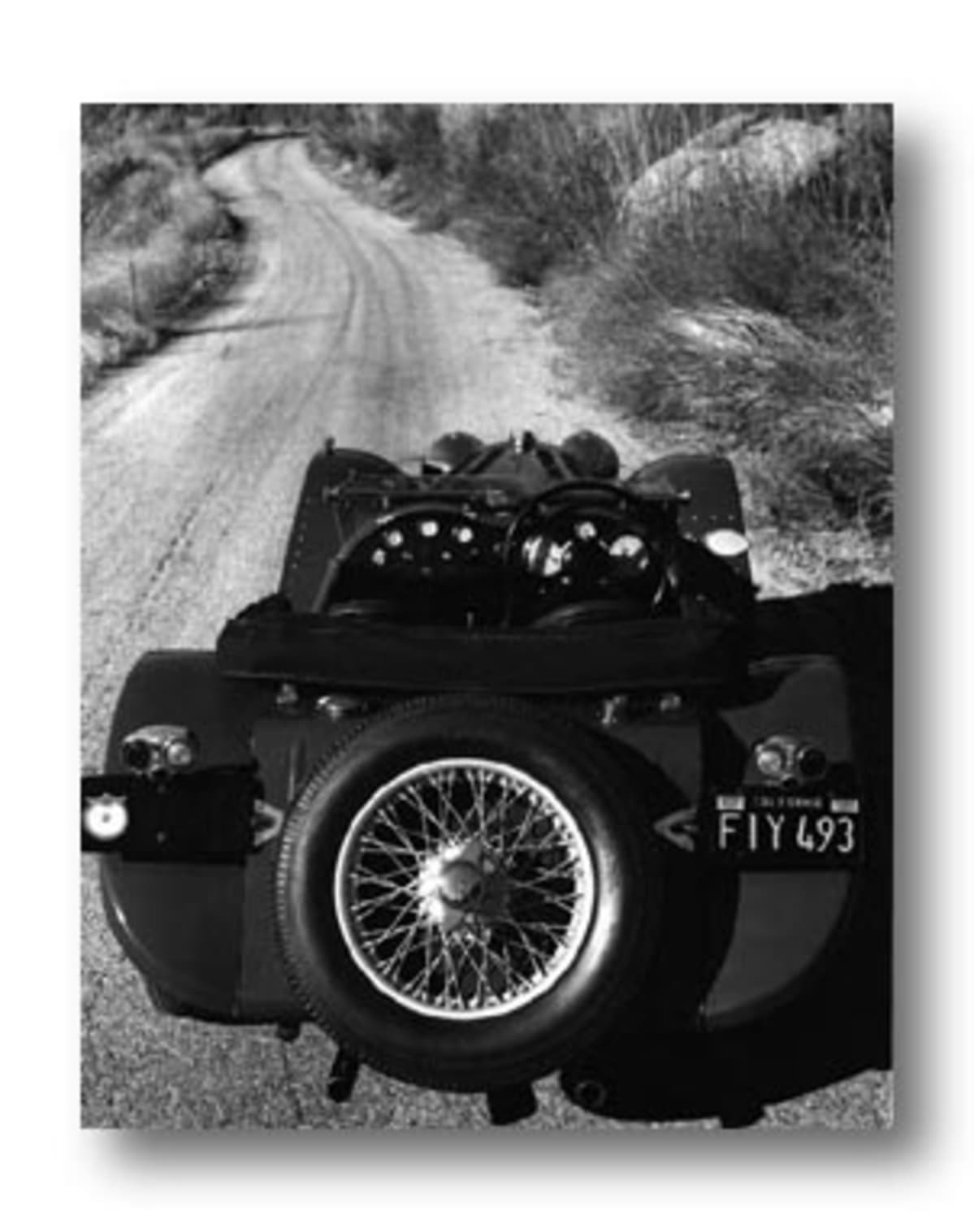
The next day, unable to find another 12V battery to jump the MG, we cleaned the MG battery, pumped up the tires by hand, swept the worst of the pine needles out of the car, tied a tow-rope between the cars and took off for the base—about 250 back road miles away. By the time we had gone ten miles I had folded the windshield and was reveling in the razor-sharp rack and pinion steering.It was by now taking two pumps of the brake to keep the rope tight. At 30 miles, Blackman stopped to see if I was OK aside from wind-chill induced frostbite. Blackman had a plan: get some gas in the MG, then tow-start it. Brilliant. Why hadn’t I thought of all that.We got to a Billups (not Phillips) station–this time it took three pumps to keep from hitting the Chevy. Four gallons of ethyl (about a buck), a quart of 40wt non-detergent ($.25), a squint into the radiator, and I was back behind the wheel looking as much like a hero in an R&T rotogravure as I knew how.While the cracker in the gas station stood there and smirked, Blackman eased the rope tight, I pulled the choke, turned on the ignition, worried about the headlights being on, popped the fly-off racing handbrake and with a little jerk we were off.The plan was to get up to about 20, then ease the clutch out in third. There had been a lot of discussion about whether second or third was the gear of choice to keep such a highly tuned machine in the power band, etc…had I read all of those tech columns for nothing? When the TD was running, the plan went, I was to slow with the rope slack, keep it running, Blackman would hop out, untie the car, then try to keep me in sight on the way back to the base.We got to 20, then 25. I shook most of the fantasies out of my head and started to ease out on the clutch. The engine turned. Faster. Faster yet. It popped a few times then it was running on two, maybe three. The vibration was unbelievable. Blackman slowed, I started pumping the brakes and by the fourth pump it was clear that I wasn’t going to get it stopped.Ah, the razor-sharp steering. I went around the stationary Chevy on the right and by the time I got even with its front, the rope, still tied to my front crossmember and the Chev’s rear, was tight.The effect was interesting: I had run over the rope with my left front wheel so that when it tightened, it was under the MG. Naturally it threw the TD into the air. Blackman was only a little upset at the rope dent in his right rear fender.I had five years of Roads & Tracks behind me but Blackman had lived on a farm full of recalcitrant machinery most of his life. I was upset because we didn’t have any Whitworth spanners, Castrol brake fluid, and most of all, because I knew Blackman, despite not having had the benefits of my R&Ts, knew what he was doing.It took about ten minutes to find the master cylinder, another fifteen to pull up the rotting carpet and get the access cover off. When we got the filler plug out (with a non-Whitworth Crescent), the m/cyl reservoir was empty except for the little puddle of damp rust in the bottom.Blackman trotted back to the gas station while I tried to straighten out the rope problem. He came back with a quart of Dixie Firecracker Brake Fluid which we lovingly decanted, then sort-of bled the brakes until there was a two-pump pedal again.Again we towed. Again the car started. Again the terrible vibration. No rope drama. Things are getting better. Pulled the plugs–they look mostly OK. The vibration is there with the car stopped so it’s not the driveshaft. We are pondering, the engine is vibrating, when there is a terrific clang-bang and the vibration is even worse. We trip over one another getting it shut off. The four blade fan has become a three blade fan. Fortunately the hood was open and neither of us was in the line of fire.The next 240 miles were done on the end of the rope. With the windshield folded. It didn’t rain too much but I got a lousy cold anyway.The massive vibration turned out to be a connecting rod (maybe Morris?) that was a couple of ounces heavier than the other three. The rod was installed somewhere down there in Georgia after a rod bearing had failed at some time. The car vibrated and so the car was relegated, we guessed, to the back yard where we rescued it.I’ll spare you the learning curve–it was steep. Thanks to various real mechanics, a friendly local machine shop that was more used to John Deeres than MGs, a friend who read the official MG shop manual in a cultured British accent, and finally, the Cannon brothers who ran a terrific shop in Columbia, the Carolina winter disappeared while I had the engine balanced by “Mad Dog” Osieki (probably spelled wrong) in Charlotte, the bores honed, new rings, a light cut taken off the head, TD MkII valve springs, matched– “fettling” we called it–manifolds and carbs to the ports, and a new set of Billups Dixie Deluxe 5.60X15 tires. We filled the shocks with gear oil, rebuilt the brakes…I borrowed seat belts and a flight suit from Air Force Personal Equipment, bought a Cromwell helmet (just like Stirling’s) from a captain who’s wife made him promise to forget about racing (his TR-2), and when spring and the first race of the year arrived at Columbia, I was ready.My First RaceThe course was an old WWII bomber parking area across from what was once Columbia Army Air Base—it was 1.75 miles, 13 turns of abrasive concrete with some elevation change.To make up for my less-than-generous USAF salary, I had gotten a part time job at a used car lot in Columbia—so naturally I had driven a wide variety of used cars around the course. I must have ground an inch of General Dual 90 and U.S. Royal Master rubber into that winding road. I was so ready.I even managed a couple of gallons of 115/130 avgas, courtesy of the flight line…My competition was a TF 1250, about six other TDs, including a MkII, three TCs (one with cut-down wires—the subject of much controversy), the Porsche 1100 roadster I had seen at Walterboro, and a few assorted little sedans including a fast but disintegrating Morris Minor powered by a Ford V8-60.OK. No more suspense. I’m going to guess that the other MGs that made up the G-production group were driven by guys just as fearful and inexperienced as I was, but considerably older.I was wild—I won (my class) by intimidating the hell out of them.It was probably the worst thing that could have happened. It created the illusion, at least in my own mind, that I really was pretty good, that winning was important, and that, for me at least, it was easy. The disease took hold. I have yet to find an antedote.That win was the last one for a long, long time. In the half dozen or so races with the TD, I suffered all manner of problems: we (it was really a collective effort) ran out of money at Sea Island, Georgia and had to leave early; I finished second to the first Alfa Romeo Giulietta Veloce that I had ever seen—he lapped me three times in about 45 minutes; passed a “SPEED LIMIT 45MPH” at 40mph during a hillclimb in North Carolina…moral victories bring no solid trophies.The Alfa episode made me realize the limitations of racing a $500 car (only a slight exaggeration) against a $5000 car (again, only slightly exaggerated). I sold the TD to one my friends, attempted to build a car based on all I had learned reading “Sports Car Design” in R&T, failed miserably (naturally), and finally got out of the Air Force.Back home I got married, got a Porsche (very used), we had a child, moved from Ohio to California, realized I had to sell the Porsche—it was just plain worn out—and began to experience premature sports car deprivation symptoms.Not too long before I moved there was an article in Sports Cars Illustrated, the predecessor to Car and Driver, called something like “Nine Dual Purpose Sports Cars”. Last in the story, after the AC Bristol, MGA Twin Cam, A-H Sprite and big Healey (and Corvette, Porsche Carrera, Alfa, etc.) was the Berkeley, now with the big 492cc Excelsior Talisman engine.BerkeleysLet me tell you about Berkeleys—designed by Laurie Bond, who was responsible for an interesting range of odd little cars, they were actually built by a caravan (trailer) company called Berkeley of Biggleswade—a triumph of design over execution.First, I insist that it be pronounced “BARK-ley”. Second, you must know that Berkeley follows Bentley in the classifieds. There is no Third.It had a monococque fiberglass body bonded and riveted to an aluminum undertray. Inside that were a couple of steel cages that carried the engine and fully independent suspension. Ten feet long, maybe 800 lbs, (mostly) nicely styled, there was a certain suicidal charm about the whole little thing.The Berkeley importer on the west coast was Olympic International Motors, naturally now defunct, that, in 1960, occupied the same building that Hollywood Sport Cars did later. HSC was the home of the all- conquering Ronnie Bucknam Healey, the Jim Adams MGA/B and Tiger, and sundry others all put together by the legendary Doane Spencer.OIM had a Berkeley in the showroom that had won (on index) a six-hour race at Torrey Pines—the only case of a Berk actually winning anything on the west coast (There was a guy in Texas, probably a necromancer, who won an SCCA championship with his.). So there was I with a rusty, dying 1956 Porsche…they gave me a thousand bucks and a brand new Berkeley and I actually thought it was a good deal.
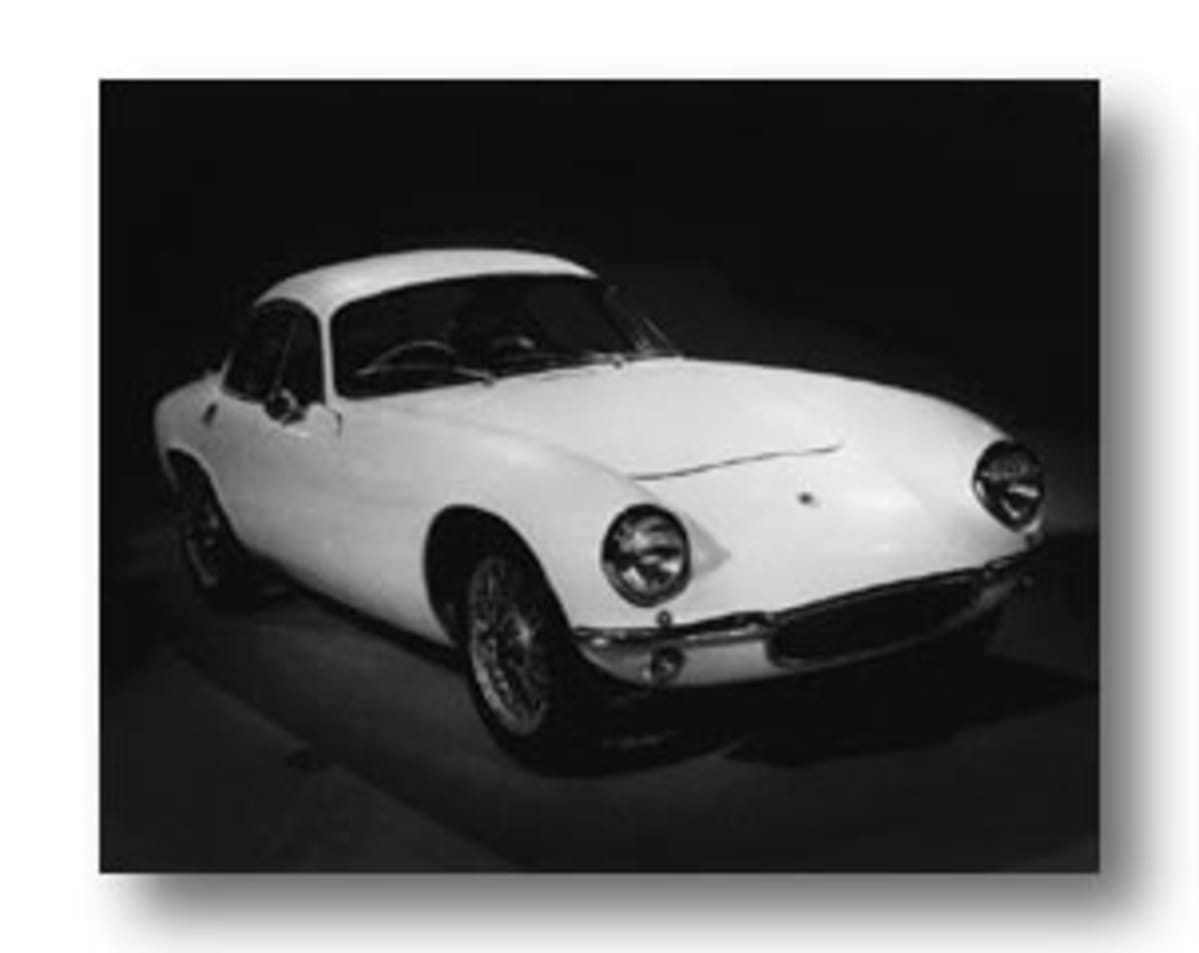
Charitably, I can look back on the Berk as a series of learning experiences: two-stroke theory, dynastart technology, front-wheel drive technique, fiberglass repair, the mysteries of Amal carbs, so much more. They were as fast (or as slow, depending on one’s point of view) maybe, as a 948cc Sprite—they were, at least in my hands, terminally unreliable. I had a large collection of holed pistons, broken chains, snapped shift levers, mangled dynastart pieces, trashed ignition-point plates…I try to look back on it all as character building.The Berk won a couple of autocrosses. It broke on the track at Las Vegas, San Luis Obispo, Willow Springs, Riverside… I ran it at the drags (65 mph in about 19 sec.) and while I beat a few cars there, my half-liter car was subjected to about eight liters of abuse. I must have built an enormous amount of character while I owned it. Sure.Somehow, through all of this I was still starry-eyed, still a believer in R&T, and the belief that, despite the daily contrary evidence, there was something magical, something supernatural, something almost genetically superior about imports.My daily driver during most of this time was a pea-green 1954 Studebaker Commander Connestoga, with dual exhausts and, of course, a trailer hitch.I had bought it from Jay Chamberlain, SoCal’s original Lotus agent when it became clear that the Berk was never going to make it as a family car. Over time it acquired Hawk finned brakes, bigger front and rear sway bars, Sears Best HD shocks, Dodge cop car wheels, Michelin X tires (takeoffs from a former boss’s 300SL), and a set of 3″ seatbelts. It was really a wonderful car but pretty ugly.With 232 cu.in. and a Borg-Warner three-speed automatic (with a device to lock it in gear) it wasn’t a straight-line rocketship, but it did carry me to Toronto, Canada to buy 1500lbs. of Lucas generator and starter cores; it towed the Berk (and later my Porsche Speedster) to all of the tracks where the racing car would break and I would sleep in the back of the Stude, then tow dejectedly home Sunday night.In those days of short term dead end jobs, family dissolution and eternally broken racing cars, therapy lay in taking the Stude up onto Mulholland Drive and waiting for the first unsuspecting sports car driver (usually in a British roadster). Sometimes it was the nether end of Sunset Blvd through Pacific Palisades and on toward the Pacific, or, now and then through the Sepulveda Pass.Theraputic joy was in seeing a Healey receding in the rearview mirror or watching some Super 90 go suddenly sideways in front of me then pull to the side of the road. I like to think that urban legends grew up around the Stude.The TD episode went on too long and I probably cut the Berkeley chapter too short. It won’t allow me to talk much about racing a 105/112E Anglia in the Trans Am (we won our class in the first T/A held at Riverside—I wasn’t driving), or racing a Sunbeam Alpine in the rain at Seattle International Raceway, or crewing for the World’s Fastest Bugeye at the Road Atlanta runoffs, or riding to Put-in-Bay with Rick the One-Armed Bandit in a Jag MkVII…But what I’d really like to know is, when I pulled into the car show to show off the `94 Mustang that I was driving, how did that guy even know that I had owned a British car.
Top image: Both Len Frank and Harry Potter shared driving experiences behind the wheel of the English Ford Anglia, albeit Len’s version didn’t fly. Artwork by Jim Kay for the fully illustrated version of Harry Potter and the Chamber of Secrets (courtesy Bloomsbury Publishing)
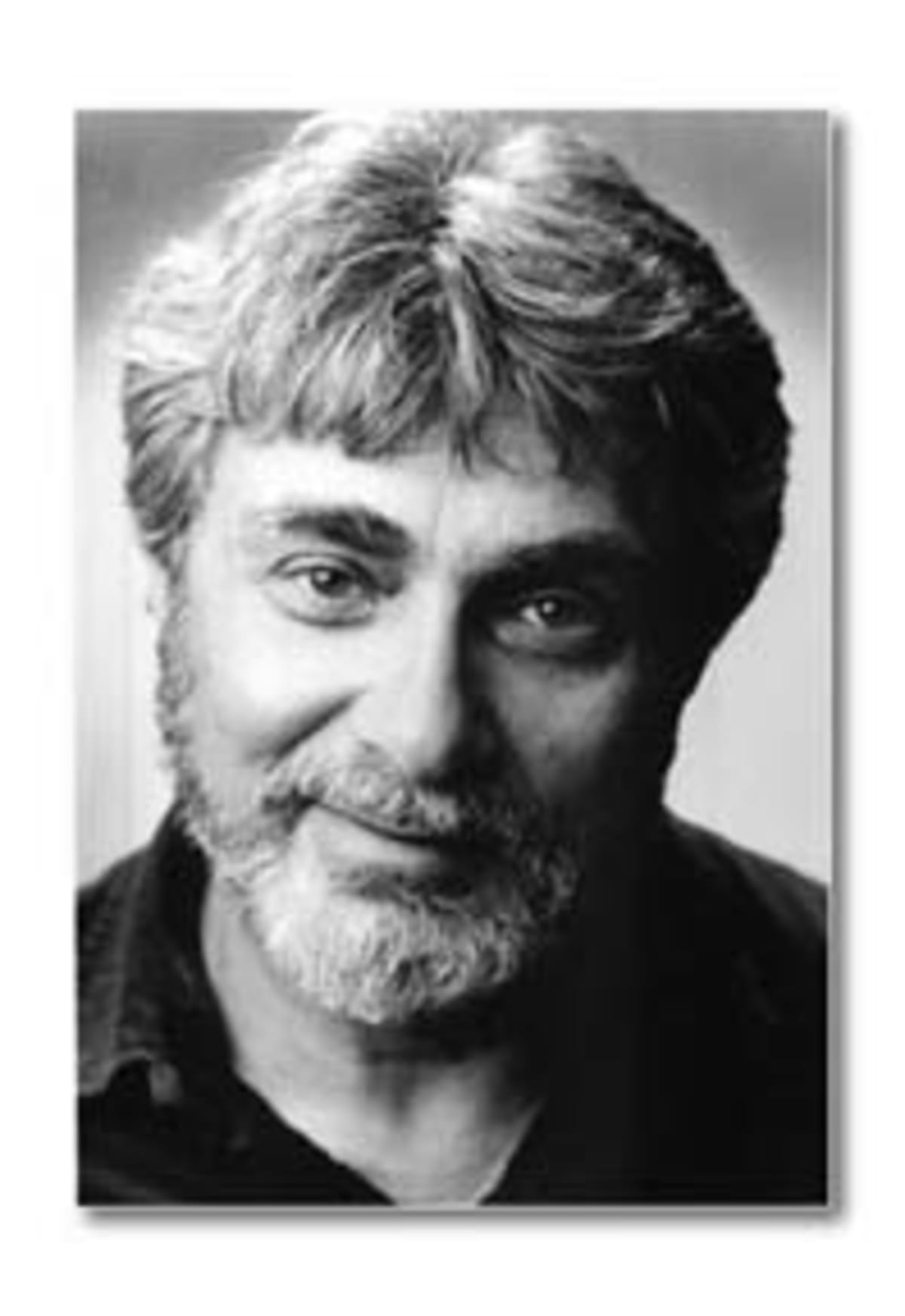
The late Len Frank was the legendary co-host of “The Car Show”—the first and longest-running automotive broadcast program on the airwaves. Len was also a highly regarded journalist, having served in editorial roles with Motor Trend, Sports Car Graphic, Popular Mechanics, and a number of other publications. LA Car is proud to once again host “Look Down the Road – The Writings of Len Frank” within its pages. Special thanks to another long-time automotive journalist, Matt Stone, who has been serving as the curator of Len Frank’s archives since his passing in 1996 at the age of 60. During the next few months, we will be re-posting the entire collection of “Look Down the Road”, and you’ll be able to view them all in one location under the simple search term “Len Frank”. – Roy Nakano




